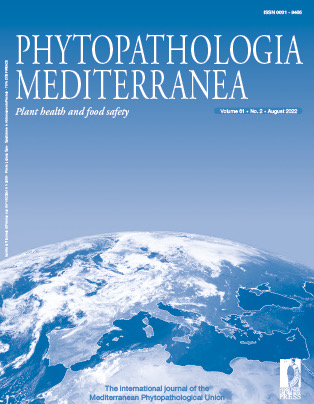Published 2022-07-19
Keywords
- Cerotelium fici,
- Ficus carica,
- host response,
- infection,
- phylogenetic analysis
How to Cite
Abstract
Fig rust, caused by Cerotelium fici, was first recorded in South Africa in 1927. Recent observations have revealed high incidence of rust and untimely defoliation of fig trees (Ficus carica) in residential gardens and commercial orchards. Using phylogenetic analysis, the causal organism of a fig rust isolate (PREM63073) collected in 2020 was confirmed as Phakopsora nishidana. Inoculation and microscope studies showed that mulberry plants were immune to P. nishidana isolate PREM63073. Infection of fig leaves occurred through stomata on the abaxial leaf surfaces. Very long germ tubes were observed for P. nishidana, often with no clear contact with the leaf surfaces and an apparent lack of directional growth towards stomata. Inoculated plants from 15 fig cultivars varied in their severity of leaf infection, whereas fruit of the cultivar Kadota developed reddish-brown blemishes without sporulation. Currently, C. fici and P. nishidana are recognised as occurring on F. carica in South Africa. This suggests a need to resolve the worldwide distribution and identity of the rust species involved.







